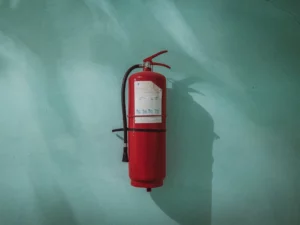
Recognising and Addressing Heat-Related Illnesses: Emergency Response Plans for the Workplace
As temperatures rise, especially in warmer seasons, the risk of heat-related illnesses at work becomes a big concern. Heat-related conditions, such as heat exhaustion, dehydration, and heatstroke, can escalate quickly, posing serious health risks.
This article will look at the symptoms of these illnesses. It will also discuss what to do in emergencies. Finally, it will highlight the importance of workplace policies to prevent heat-related incidents.
What Are Heat-Related Illnesses?
Heat-related illnesses occur when the body cannot control its temperature. This usually happens from being in the heat too long or not drinking enough water. Common heat-related illnesses include:
- Heat Cramps: Painful muscle spasms caused by heavy sweating and loss of water and salt during physical work or outdoor activities.
- Heat Exhaustion: Occurs when the body overheats, with symptoms like heavy sweating, dizziness, nausea, and extreme tiredness.
- Heatstroke: A serious medical emergency where body temperature rises above 40°C (104°F) due to exposure to excessive heat. Without quick treatment, it can cause organ damage or even be fatal.
- Dehydration: Not drinking enough water affects both physical and mental performance, making heat-related illnesses more likely.
Recognising the Symptoms
Being able to identify heat-related illnesses early can prevent them from becoming life-threatening. Common signs include:
- Heat Cramps: Painful muscle cramps, typically in the legs or abdomen.
- Heat Exhaustion: Headache, dizziness, rapid pulse, profuse sweating, and cool, clammy skin.
- Heatstroke: High body temperature, confusion, slurred speech, lack of sweating, and unconsciousness.
- Dehydration: Dry mouth, dark-colored urine, headaches, and fatigue.
Immediate Actions for Heat Emergencies
Heat Cramps
- Move the person to a cool area and encourage rest.
- Provide water or an electrolyte drink.
- Gently stretch or massage the cramping muscles.
Heat Exhaustion
- Get the person to lie down in a shaded or air-conditioned space.
- Provide water and cool the body with wet cloths.
- If symptoms don’t improve within 30 minutes, seek medical attention.
Heatstroke
- Call emergency services immediately—this is a life-threatening emergency.
- Move the person to a cooler environment.
- Apply cold compresses to reduce body temperature rapidly.
- Avoid giving fluids if the person is unconscious.
Dehydration
- Encourage small sips of water to rehydrate.
- Rest in a shaded or cool space.
- If dehydration symptoms are severe (confusion, dizziness), seek medical help.
Developing an Emergency Response Plan for Heat-Related Illnesses
Workplaces should have clear emergency procedures to address heat-related incidents and prevent their escalation. Here are key components of an effective response plan:
Training and Awareness
- Educate employees and supervisors on the signs of heat-related illnesses.
- Provide first-aid training focused on treating heat exhaustion and heatstroke.
Access to Hydration and Cooling Stations
- Ensure employees have access to cool drinking water throughout the day.
- Set up shaded rest areas or air-conditioned rooms for breaks, especially for outdoor workers.
Monitoring Environmental Conditions
- Use temperature and humidity monitoring tools to track heat levels.
- Implement work-rest cycles during heatwaves or extreme temperatures.
Emergency Communication Plan
- Develop a system for employees to report heat-related symptoms quickly.
- Assign designated first responders who are trained to handle emergencies.
Health Screenings and Fitness to Work
- Encourage employees with existing medical conditions, like heart disease, to talk to health professionals about working in the heat.
- Monitor employees for early signs of heat stress, especially those performing strenuous tasks.
Workplace Policies to Prevent Heat-Related Illnesses
Employers can proactively protect workers by implementing the following policies:
- Modified Work Schedules: Shift outdoor tasks to cooler parts of the day, such as early mornings or late afternoons.
- Rest Breaks: Schedule frequent breaks, especially during peak heat hours, to allow workers to cool down and rehydrate.
- Clothing Guidelines: Encourage lightweight, breathable clothing and hats for outdoor workers. Provide personal protective equipment (PPE) designed for hot conditions.
- Buddy System: Pair workers to monitor each other for signs of heat-related illness. A buddy system ensures quick action if symptoms arise.
Apex Environmental’s Thermal Risk Assessments and Monitoring Services
Apex Environmental provides thermal risk assessments and monitoring services. These services help businesses find and reduce the risks of heat stress at work. These assessments comply with local occupation health and safety standards, ensuring safe working conditions for employees.
Conclusion
Heat-related illnesses can be dangerous, especially for workers exposed to high temperatures or doing physical work. It’s important to spot symptoms of heat exhaustion and heatstroke early to avoid serious health problems.
Employers can help by making emergency response plans. They should set up water and cooling stations. It is also important to train staff to recognize and respond to heat-related symptoms. With the right policies focused on prevention and safety, workplaces can stay healthier and safer during hot weather.
Promoting heat safety is not just about following rules. It is about saving lives and creating a culture of well-being.








